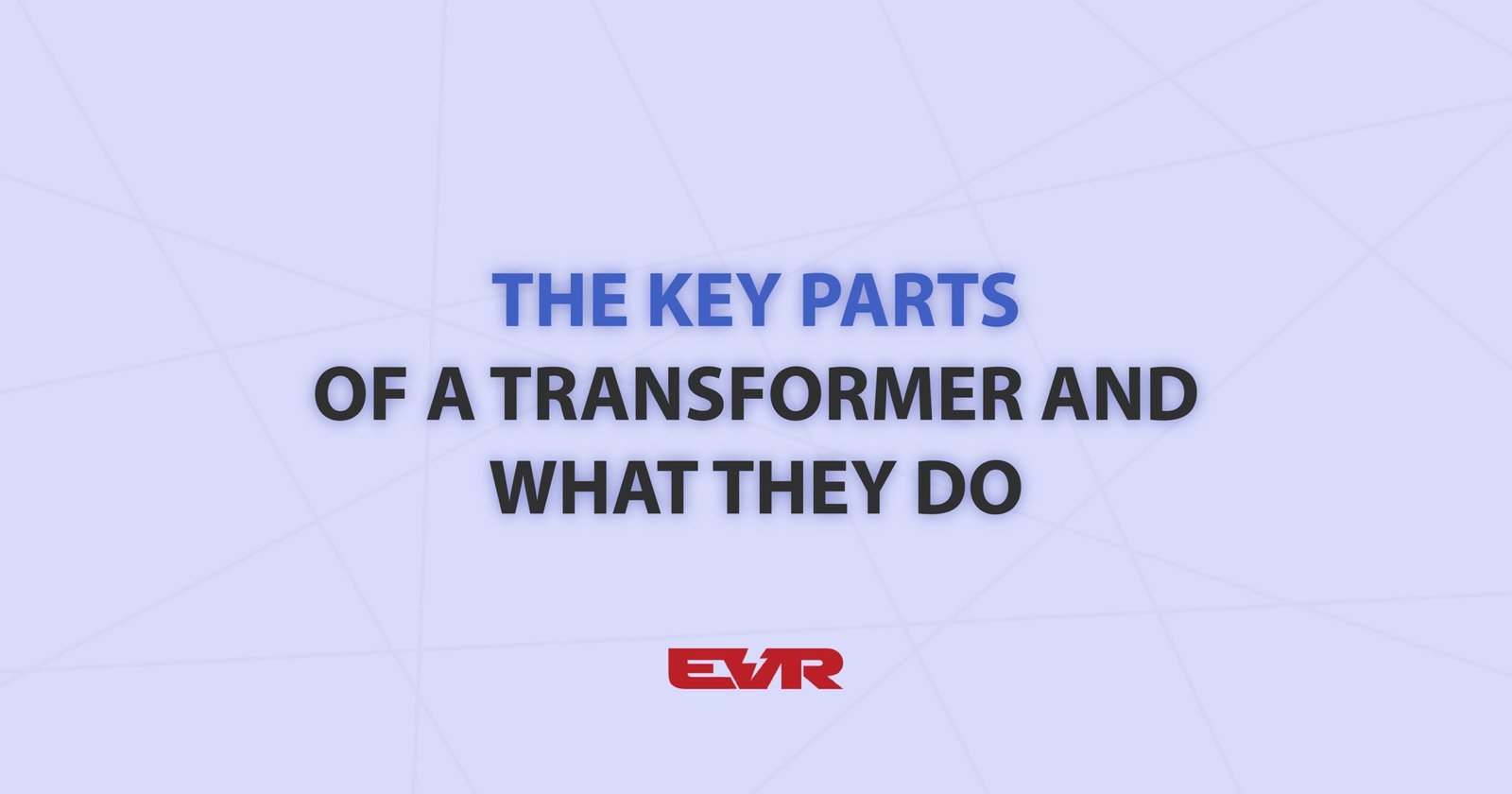If you’ve ever looked at a transformer and wondered, “What’s really going on in there?” You’re not the only one. Every building powered by electricity has a transformer or two but very few people really understand how they work. These large metal boxes are working behind the scenes to manage the power we use every day, but what’s going on inside makes little sense.
At EVR Power, we feel that getting to know the essential elements doesn’t have to be that complicated. Let’s break down the main features of a transformer and how each one serves to provide steady, safe, reliable power for you.
What Is a Transformer?
A transformer is an electrical appliance that transfers energy from one circuit to another circuit through electromagnetic induction. A transformer either increases voltage so that it can be efficiently transmitted down long transmission lines or decreases the voltage so that it can be used in our everyday lives. Whether it’s industrial, utility, or infrastructure, EVR Power delivers power transformers that stand up to high-voltage challenges with ease.
Different transformer designs meet different requirements. Isolation transformers create an electrical boundary to decouple sensitive equipment from power surges and noise, while harmonic mitigating transformers help clean distorted power waveforms caused by significant non-linear loads. Each transformer includes the same fundamental components, however, they are engineered to the distinct electrical environment they will be placed in.
Key Components of a Transformer and Their Functions
Transformers are crucial for the electrical system to transfer energy from one circuit to another efficiently. Every part contained within a transformer has a certain function, an important role to play to ensure performance, safety and reliability. Below is a list of the main parts and a brief description of the parts function and use.
1. Core – The Magnetic Pathway
- The core is intended to be the core of how the transformer functions
- Provides a magnetic path for magnetic flux to flow between the windings
- Allows the transfer of energy via electromagnetic induction
- Made of laminated steel to minimize energy loss due to eddy currents and hysteresis losses
2. Windings – The Voltage Transformers Within
- Primary winding receives the input AC voltage
- Secondary winding provides the output voltage
- The voltage ratio depends on the number of turns (step-up or step-down)
These coils are where the actual voltage transformation takes place, enabling the step-up or step-down function of the transformer.
3. Insulation – The Transformer’s Silent Shield
Insulation safeguards internal components by preventing short circuits and ensuring safe, stable operation under high voltage conditions.
- Prevents electrical contact of windings with core
- Protects winding insulation from heat, stress and short circuits
- Usually in the form of pressboard, paper or resin
4. Tap Changer – For Altering Output Voltage
This device keeps the voltage level safely within specified limits.
- Adjusts secondary voltage to voltage changes due to load.
- Tap changers are available in on-load (automatic) and off-load (manual) versions.
- Tap changers are useful in utilities and large applications.
5. Conservator Tank & Breather – For filled transformers
These components regulate oil levels and protect insulation quality in oil-filled transformers by managing expansion and filtering out moisture.
- The conservator tank stores and adjusts the amount of oil when the temperature changes.
- The breather contains silica gel and removes moisture from the air entering the tank or conservator.
- The breather keeps the oil quality and internal insulation from getting damaged.
6. Cooling System – Heat Management Device
The cooling system treats and removes heat (generated from operation) to prevent overheating.
- The amount of dissipated heat depends on the type of cooling system.
- Cooling systems are air-cooled (dry-type) or oil-cooled (ONAN and ONAF).
- Cooling systems are essential for safe long-term operation.
7. Bushings – Secure Electrical Connection
Bushings allow power transmission over thread insulated entry insulated exterior high voltage wires.
- Use insulated paths for external electricity connections.
- Bushings prevent leakage, arcing, or shorting.
- Bushings are located at the input terminal and output terminal.
8. Protection Devices: Safety in An Appliance
Protection devices will detect failure and prevent destruction from faults with internal safety devices.
- Protection devices include Buchholz relays, pressure relief valves, or thermal sensors.
- Protection devices monitor the condition of the electrical utility attempts, gas buildup, excess pressure, or heat.
- Protection devices activate internal safety devices to prevent damage from faults.
Why These Components are Important
No matter if the transformer is designed to convert voltages, isolate voltages, or transfer power to a distribution or secondary circuit, these core components are necessary for a transformer to operate safely and efficiently.
These components appear in every transformer, whether it be an inverter transformer in a PV system, a distribution transformer on your residential network, or a transformer in your home control system they’re all powered by reliable performance beginning with quality components that minimize energy loss, address the load demands, and consistently provide dependable long-term power delivery.
Your Power System Deserves Better Start with EVR
Understanding everything that powers your system inside out allows you to make better decisions. If you’re upgrading a system or specifying a transformer from design, EVR Power delivers precision engineered solutions that will both lag and meet your voltage, safety and performance needs built to last, built to lead.


0 Comments